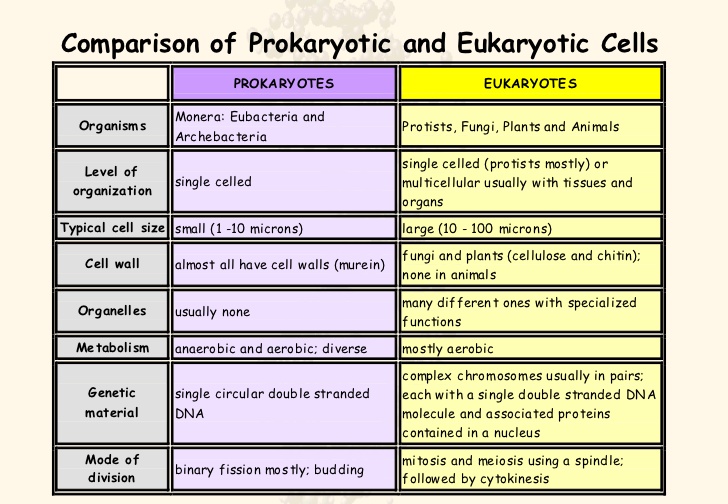Eukaryotic and prokaryotic cells share several similarities in terms of their Cell Membrane, Genetic Material, Ribosomes, and Cytoplasm.
- Cell Membrane: Both eukaryotic and prokaryotic cells have a cell membrane. This cell membrane surrounds and separates the internal environment of the cell from the external environment. This lipid bilayer is responsible for regulating the movement of substances in and out of the cell.
- Genetic Material: Both eukaryotic and prokaryotic cells contain genetic material in the form of DNA. Prokaryotic cells have a single circular chromosome located in the cytoplasm, while eukaryotic cells have multiple linear chromosomes contained within the nucleus.
- Ribosomes: Both eukaryotic and prokaryotic cells contain ribosomes, which are responsible for protein synthesis. However, the ribosomes of eukaryotic cells are larger and more complex than those of prokaryotic cells. Ribosomes play a critical role in producing proteins for both eukaryotic and prokaryotic cells.
- Cytoplasm: Finally, both eukaryotic and prokaryotic cells have Cytoplasm, which is the gel-like substance that fills the cell and contains various organelles. This is the site of many cellular processes, such as metabolism and protein synthesis.
While there are similarities between these two types of cells, they also have many differences, such as the presence of membrane-bound organelles in eukaryotic cells and the lack of a nucleus in prokaryotic cells.
Despite these similarities, there are also several differences between eukaryotic and prokaryotic cells. For example, eukaryotic cells have membrane-bound organelles, while prokaryotic cells lack a nucleus.
Differences between eukaryotic and prokaryotic cells
- Cell size and arrangement: Eukaryotic cells are generally larger and more complex than prokaryotic cells. Eukaryotic cells can range in size from 10-100 micrometers, while prokaryotic cells are typically smaller, ranging from 0.1-5 micrometers. Additionally, eukaryotic cells can be multicellular and have more complex arrangements, while prokaryotic cells are typically unicellular.
- True membrane-bound nucleus: Eukaryotic cells have a true membrane-bound nucleus, meaning that the DNA is contained within a double membrane-bound organelle called the nucleus. This membrane separates the DNA from the rest of the cell. Prokaryotic cells, on the other hand, do not have a true membrane-bound nucleus. Instead, their DNA is located in a region of the cytoplasm called the nucleoid.
- DNA structure: Eukaryotic cells have linear DNA that is associated with proteins called histones, which help package the DNA into chromosomes. Prokaryotic cells, on the other hand, have circular DNA that is not associated with histones.
- Membrane-bound organelles: Eukaryotic cells have membrane-bound organelles, such as mitochondria and lysosomes, which perform specialized functions within the cell. Prokaryotic cells lack these organelles and instead rely on their cytoplasm to perform all necessary functions.
- Ribosome size: The ribosomes of eukaryotic cells are larger and more complex than those of prokaryotic cells.
- Cytoskeleton: Eukaryotic cells have a complex cytoskeleton made up of microtubules, microfilaments, and intermediate filaments, which help maintain cell shape and facilitate movement within the cell. Prokaryotic cells lack a cytoskeleton.
- Sexual reproduction: Eukaryotic cells can undergo sexual reproduction through meiosis, which involves the exchange of genetic material between two parent cells. Prokaryotic cells reproduce asexually through binary fission, in which the cell simply splits in half to produce two identical daughter cells.
- Cell division: Eukaryotic cells divide through mitosis, which involves the separation of duplicated chromosomes into two daughter nuclei. Prokaryotic cells divide through binary fission, in which the cell simply splits in half to produce two identical daughter cells.

I hope that helps clarify the differences between eukaryotic and prokaryotic cells!